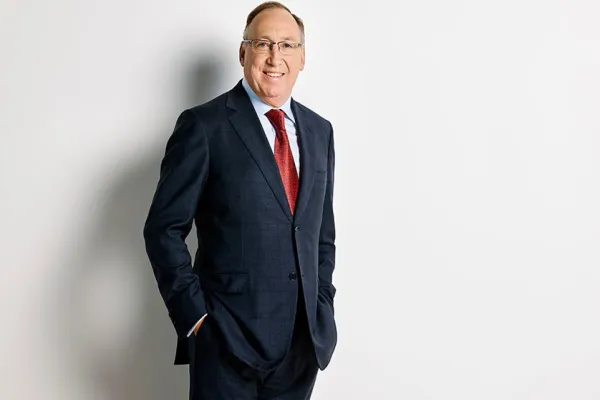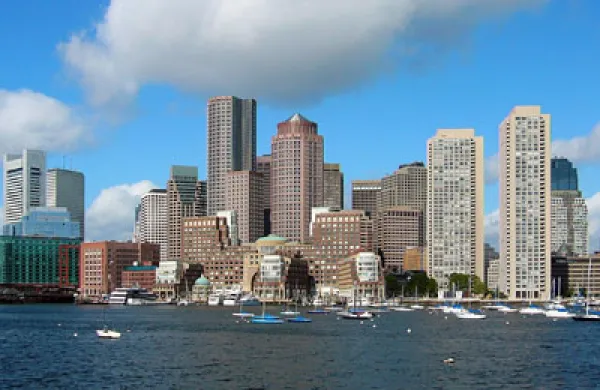With his rugged looks and vigor ous stride, Herbert Hainer exudes an energy befitting the head of the world’s second-largest sporting goods maker. Which is a good thing, because the youthful, 53-year-old boss of Germany’s Adidas will need plenty of energy to achieve his goal of overtaking industry leader Nike.
Adidas’s flagship, three-stripe brand is on a roll, posting a 12 percent rise in sales in 2007 on a neutral currency basis, the third straight year of double-digit gains. But Hainer has his hands full trying to turn around Reebok International, the Canton, Massachusetts–based sports shoe maker he bought for $3.8 billion in 2006 to help close the gap with Nike. Reebok rode the aerobics wave to prominence in the 1980s but has since lost its luster; some of its shoes were recently selling for $29 a pair in discount stores. To revitalize Reebok, Hainer has invested in higher-performance shoes while culling low-end models and retail outlets, sacrificing sales today for what he hopes will be stronger margins tomorrow. Reebok’s sales fell 5 percent in 2007, and with the U.S. economy in what could be a serious recession, the company faces an uphill battle. In response to the pressure, Hainer shuffled Reebok’s management last month, promoting marketing chief Uli Becker to replace Paul Harrington as CEO. Still, Hainer expresses confidence that Reebok will rebound in 2009, and he insists that the merger is paying for itself through economies of scale. Adidas’s overall net income rose 14 percent in 2007, to €551 million ($812 million), on a 2 percent rise in sales, to €10.3 billion. Nike had earnings of $1.4 billion on sales of $13.5 billion in the first nine months of its financial year, ended February 29.
Elsewhere, Hainer is betting on major sporting events to drive sales growth. Adidas is a sponsor of the Olympic Games in Beijing this summer and has just launched a major advertising campaign featuring NBA basketball star Yao Ming in an effort to double sales in China to more than €1 billion this year. Hainer also expects to get a lift from the Euro 2008 soccer championship in Austria and Switzerland in June. Order backlogs for Adidas-brand goods rose 17 percent in 2007 in anticipation of the event.
Hainer, a butcher’s son from Bavaria who started his career as a sales manager at Procter & Gamble Co. in Germany before joining Adidas as a sales director in 1987 and rising to CEO in 2001, discussed the company’s outlook recently with International Editor Tom Buerkle at Institutional Investor’s New York office.
Institutional Investor: What steps are you taking to turn Reebok around?
Hainer: The back office is completely integrated, so we have one guy who is sourcing worldwide for brand Adidas, for brand Reebok, etc. There’s one guy who is responsible for legal, for human resources. This will definitely deliver synergies; we have foreseen $175 million in cost synergies and about $500 million in revenue synergies.
The second step is to rebuild the brand. And to rebuild the brand, especially in the U.S., means that we have to shrink, stop selling into certain distribution channels, stop selling products at $29. We have also made a huge restructuring in the product department, where we have brought in people from Adidas. And you see already the products getting better season by season.
Would you do this deal again?
Definitely. When we acquired Reebok, we said one of the points is that we get better exposure for brand Adidas in the U.S. In the NBA we definitely have it. Every evening when I watch basketball here on TV, I see the three stripes when the players come in.
Point number two is that we have a lot of cost synergies, which go primarily to brand Adidas. We were able to reduce costs by 2 percent for all shoes that we have sourced in 2007.
How vulnerable are you to a U.S. recession?
If we go into recession, it normally hits the market leader the hardest, so I believe that my competitor most probably will be hit more than us. But unfortunately, this is not good for anybody. I definitely believe that people, that kids, will still buy soccer boots, because they are playing soccer.
You’re sponsoring a lot of events this year.
What kind of impact do you expect?
Events that you can commercialize immediately include the Super Bowl and the European soccer championship. At a meeting [on January 29, four days before the Super Bowl], one of the big retailers here was very happy about sales of New York Giants jerseys. We were happy that we sold all the Green Bay Packers shirts. New York is a bigger market than Green Bay; therefore we were not unhappy that New York went to the final.
Then you have other events like the Olympic Games. Nobody’s buying a swimsuit when Ian Thorpe or somebody else is winning the 100-meter. But this event gives you a big window to showcase your brand in a lot of different sports. We are also using our commitment to the Olympic Games and to the Beijing Organizing Committee. We need to really communicate to the Chinese consumer that we are the ones who are working together with the BOC, we are helping their athletes to perform better, to win gold medals. You can be proud of them, and we are helping you.
What percentage of your Olympic marketing budget is devoted to China?
We don’t publish any individual numbers. What I can tell you is that, in total, we are spending between 13 and 13.5 percent of our sales on marketing.
Are the dynamics of the business any different in China?
Can you maintain the same kind of margins there as elsewhere?
When you are isolated for 40, 50 or a few hundred years, then you want to have things that you were not allowed to get before. The Chinese, especially the young people, are very brand-conscious. They don’t have so much money, but if only 10 percent of the Chinese population can afford our products, then we’re talking about 120, 130 million consumers. And our products are not big-investment goods.
There was no retail infrastructure in China. Therefore we have built our own stores. We have nearly 4,000 stores for Adidas; we’re opening about two stores every day. We are over 1,000 for Reebok. We will go up to 5,000 in 2010 for Adidas and about 2,000 for Reebok.
Are you getting value out of Yao Ming?
We started the big campaign in November, and we will put more money behind it until the end of the games. This is a once-in-a-lifetime opportunity with Yao in China.
What kind of impact do you expect from Euro 2008 and the African Cup?
We are for the first time the provider of the official ball, which has a special African design. The European Championship, the African Cup of Nations, our relationship with Liverpool and Chelsea will help us to earn soccer revenues of more than €1.2 billion, an increase of about 35 percent.
Nike is targeting soccer. Are you concerned about the competition?
If Nike buys [British sporting goods maker] Umbro, then they will be a little bigger than us. I do believe we can catch up. There is no doubt we dominated the World Cup in 2006. And since the end of last year, we have added the Mexican national team, which was a Nike asset. So I’m fairly optimistic that we will keep our leading position.
Nike offered a contract to the German national team, an Adidas client, and you responded. How much more are you paying under the new contract?
We paid roughly €11 million [annually] before, and we will pay €20 million [starting in 2011]. Of course it’s a bit more than I would have liked to pay.
Is there a point at which the cost of these sponsorships gets out of hand?
We have to calculate every investment: Is it worthwhile? Three years ago, when the German Track and Field Federation came to us and said, “Nike has offered us more,” we said, “Okay, good, then you have to go and try to find your luck somewhere else.”
Is it important to be No. 1? Is that a clear goal?
I think becoming No. 1 is much more an internal motivation than it is really important, because it doesn’t make sense just to be No. 1 if your profitability slips. So we always say we want to be the leading sports company — leading in how we work together with our athletes, with our retailers, with our consumers, in what kind of products we provide. And I believe if we do all these things right, then we also will be the biggest in revenues. But this is not the primary goal. First and foremost, we have to grow our profitability and increase shareholder value.
What about acquisitions?
If we look a few years into the future, I see a possibility in the outerwear category. We are not as strong as I would like to see us.
When traveling, how often do you run?
I try to do my run twice or three times per week. If I don’t run for a few days, I get uncomfortable and sometimes my people here feel it. This is the best way to stay in shape when you are doing all these travels and lunches and dinners.





